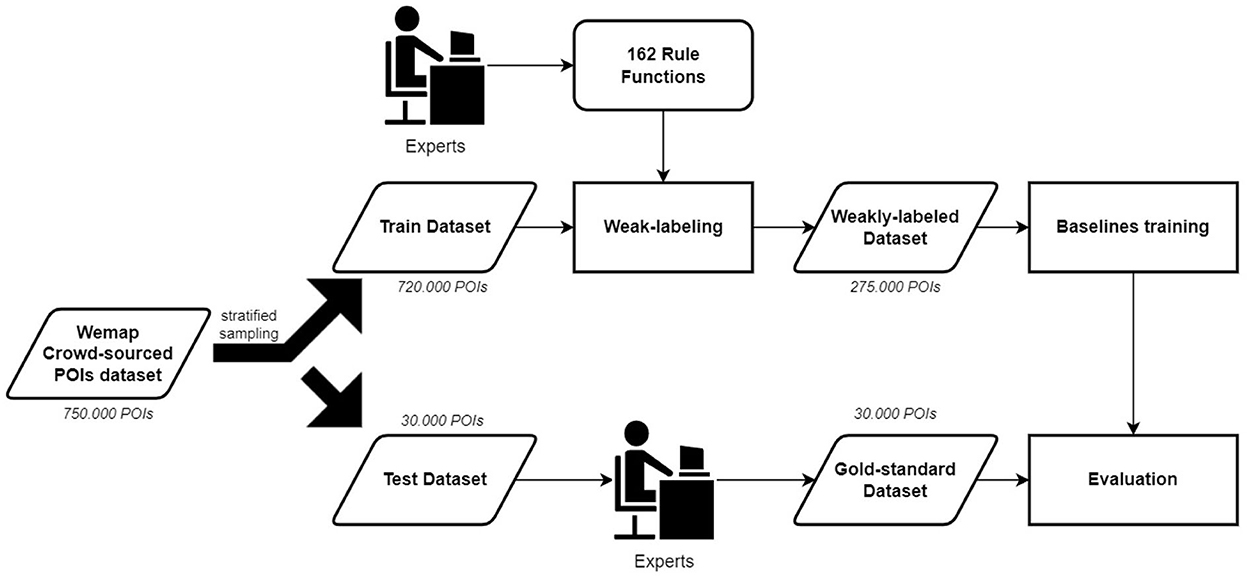- 1Center of Multidisciplinary Integrated Technologies for Field Monitoring, Vietnam National University of Engineering and Technology, Hanoi, Vietnam
- 2NTT Hi-Tech Institute, Nguyen Tat Thanh University, Ho Chi Minh City, Vietnam
- 3Faculty of Information Technology, VNU University of Engineering and Technology, Hanoi, Vietnam
- 4FIMO, Hanoi, Vietnam
Point-of-Interests (POIs) represent geographic location by different categories (e.g., touristic places, amenities, or shops) and play a prominent role in several location-based applications. However, the majority of POIs category labels are crowd-sourced by the community, thus often of low quality. In this paper, we introduce the first annotated dataset for the POIs categorical classification task in Vietnamese. A total of 750,000 POIs are collected from WeMap, a Vietnamese digital map. Large-scale hand-labeling is inherently time-consuming and labor-intensive, thus we have proposed a new approach using weak labeling. As a result, our dataset covers 15 categories with 275,000 weak-labeled POIs for training, and 30,000 gold-standard POIs for testing, making it the largest compared to the existing Vietnamese POIs dataset. We empirically conduct POI categorical classification experiments using a strong baseline (BERT-based fine-tuning) on our dataset and find that our approach shows high efficiency and is applicable on a large scale. The proposed baseline gives an F1 score of 90% on the test dataset, and significantly improves the accuracy of WeMap POI data by a margin of 37% (from 56 to 93%).
1. Introduction
With the increasing availability of consumer-graded geo-location devices (e.g., GPS-equipped smartphones), and the development of location-sharing platforms (e.g., Google Places and Foursquare), Volunteered Geographic Information (VGI) has been emergently generated by large numbers of private citizens (Goodchild, 2007). Despite that being used in an increasing number of online mapping applications (e.g., Google Maps and OpenStreetMap), VGI suffers from quality and reliability issues due to uncontrolled contributor's levels of expertise (Basiri et al., 2019).
As a major part of VGI projects, Points-of-Interests (POIs) describe geographic locations, such as tourist places, amenities, or shops, and are largely crowd-sourced by citizens (Touya et al., 2017). Due to its key role in many popular consumer applications (e.g., Facebook and Swarm), assessing the quality of VGI POI is crucial and is one of the main research topics related to VGI. A common practice for POI quality assessment is to automatically (re-)classify their categorical classes and evaluate the accuracy of crowd-sourced labels. POI classification can be defined as a straightforward multi-class classification problem (Giannopoulos et al., 2019). Several algorithms have been proposed to classify POI and can be roughly divided into two main categories: semi-automatic methods that assist the user during the manual annotation process and supervised machine learning/deep learning (ML/DL) based approaches.
Context-based approaches are often used to assist the user during the annotation process. These approaches rely on Tobler's first law of geography stating that “all things are related, but nearby things are more related than distant things” (Tobler, 1970; Vandecasteele and Devillers, 2015). A methodology to analyze the spatial-semantic interaction of point features was proposed by Mülligann et al. (2011). By analyzing the spatial co-occurrence, potential correlations between two POIs of different types or the same type are identified. Their results set the stage for systems that assist VGI contributors in suggesting the types of new point features (Mülligann et al., 2011). Another user-assisted tag recommendation system for POI categories was proposed by Vandecasteele and Devillers (2015) as a plugin for the Java OpenStreetMap editor (JOSM). The plugin exploits the co-occurrence of historical POI categories and suggests a list of related categories depending on the categories already specified for the selected POIs.
Most of the ML-based POI classification works are based on two steps. First, a meaningful representation of POI using its metadata (e.g., name, address, and coordinates) are extracted as training features. Then, popular conventional machine learning algorithms, such as SVM (Crammer and Singer, 2002) and k-Nearest Neighbor (Goldberger et al., 2004), are deployed to learn classification models. An approach for automatically recommending categories with a set of textual, spatial, and semantic features was proposed by Giannopoulos et al. (2016). Four different classification ensembles, namely SVM, kNN, clustering+SVM and clustering+kNN, were tested and achieved 60% accuracy for top-1 recommendation on 1400 categories. A POI categorization method that incorporates both onomastic and local contextual information as POI features was proposed by Choi et al. (2014). Although the method achieved high accuracy of 73.053%, their method requires additional POI contextual information, such as online reviews, thus not applicable for a large-scale setting where an abundance of metadata is not usually available. Recent studies proposed a new approach where minimum metadata of POI including names and coordinates are used (Giannopoulos et al., 2019; Eftaxias et al., 2019). A set of textual and neighborhood-based features directly derived from names and coordinates of POI are proposed. Textual features are defined by the bag-of-term and n-grams (including 1-grams, 3-grams, and 4-grams) frequency calculated from the POI name. Meanwhile, neighborhood-based features measure the co-occurrence of different POI categories in a nearby neighborhood. A series of eight ML algorithms including Naive Bayes, k-NN, SVM, Logistic Regression, MLP, Decision Tree, Random Forest, and Extra Trees are tested where Extra Trees achieved the highest accuracy of 78.8% on Level-1 categories (13 classes) and 67.9% on Level-2 categories (32 classes), respectively. These methods, however, still heavily rely on additional resources of nearby true-label POI categories for neighborhood-based features. With the recent advances in DL for natural language processing, especially pre-trained language models, the automatic classification of POI based only on textual features from POI is becoming feasible. Zhou et al. (2020) proposed a convolutions neural network (CNN) model to solve the POI classification problem using POI's name and external text knowledge searched from the internet. Word2Vec language model (Mikolov et al., 2013) was utilized to obtain word vectors with dimensions of 300 for each POI's name and external text knowledge; then these two-word embeddings were passed on to an attention-based head network to obtain the prediction result.
While ML/DL works well for tasks with sufficient data, gathering enough training labels is a major impediment in applying ML/DL to real-world applications (Ratner et al., 2017; Varma and Ré, 2018). Giannopoulos et al. (2019) conducted their experiments using a proprietary POI dataset on a Greek city (Marousi) which contain only 884 POIs in 13 first-level categories. Zhou et al. (2020) selected the first-level POI dataset for Beijing which included 16 categories and 133,116 samples1. Among others, Yelp Open Dataset2 is considered the most popular dataset for POI classification which contains 150,346 POIs in 11 metropolitan areas.
Notably, existing datasets for the POI classification task are all in English. To the best of our knowledge, there is little to no POI dataset available for low-resource languages such as Vietnamese. As a result, our work aims to achieve the following main goals: (i) to provide a new dataset for the categorization of POI in low-resource languages, particularly Vietnamese and (ii) to provide an effective framework for POI classification using weak-labeling to reduce the cost of the data annotation process. Overall, our contributions are summarized as follows:
• We introduce the first large-scale Vietnamese POI dataset for the multi-label classification task. Our dataset is annotated with 15 different classes related to POI types in Vietnam, consisting of 720,000 crowd-sourced noisy-labeled POIs for training and 30,000 gold-standard annotated POIs for testing.
• We explore the weak-labeling process and show that using simple heuristic rules is effective for generating large-scale training corpora and learning a powerful classification network.
• We publicly release our dataset for research or educational purposes. We hope that our dataset can serve as a starting point that potentially impacts research and real-world applications where POI plays an important role.
2. Materials and methods
2.1. Data collection
In this study, POI data is partially derived from WeMap, a Vietnamese map platform. WeMap currently contains 25.3 million Vietnamese POIs that are crowd-sourced by the community using smartphone-based geo-survey application. POI data contain name, address, coordinates, POI categories, administrative boundaries of POI, and other metadata such as popularity, phone number, and opening-hour. Figure 1 shows an example of POIs information on WeMap with name, address, and geographic location.
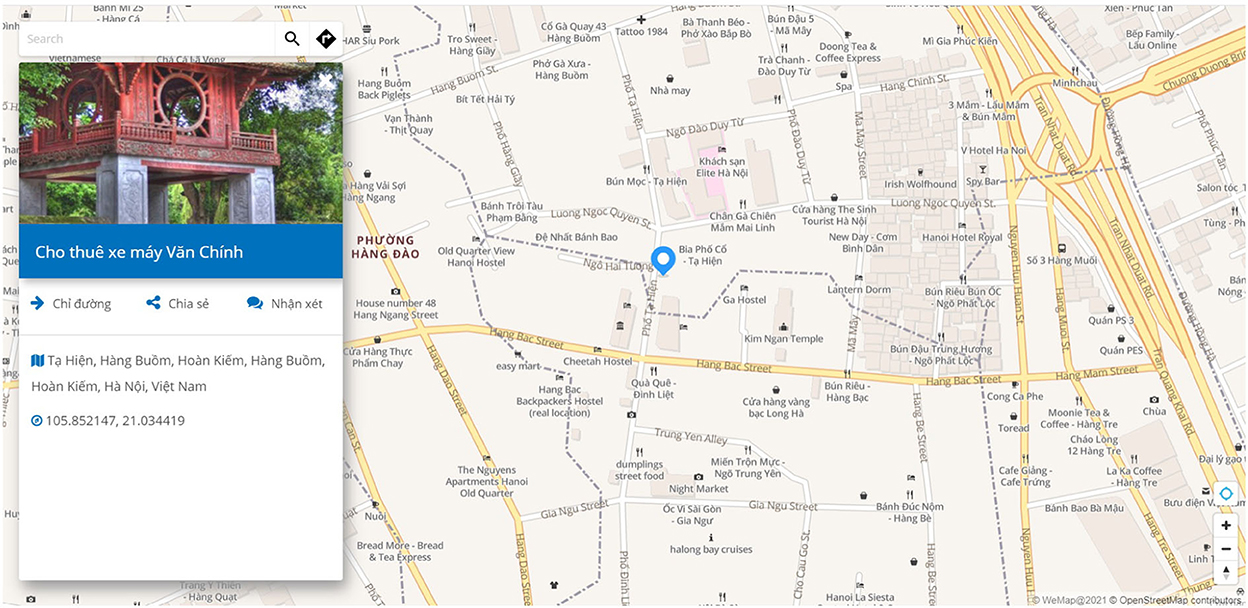
Figure 1. Example of Point-of-Interests (POIs) distribution on WeMap. Each POI contains a name, address, and geographic location.
Originally, POIs from WeMap are categorized into 162 classes using a custom taxonomy defined by VNPost3, a largest postal service company in Vietnam. We then mapped these categories into 15 categories based on the Pelias first-level taxonomy4 including accommodation, education, entertainment, finance, food, government, health, industry, natural, nightlife, professional, recreation, religion, retail, and transport. A total of 750,000 POIs are retrieved from the WeMap database. Only the name and original crowd-sourced categories of POI are kept, while other metadata are removed. Stratified sampling on crowd-sourced categories is used to split the dataset into two parts. The first part contains 30,000 POIs that are used to create gold-standard testing sets. Meanwhile, the rest of the 720,000 POIs are used to create a weak-labeled training set as described in Section 2.2. Details of the data flow are shown in Figure 2.
2.2. Weak-labeling
Snorkel, a programmatic data labeling tool, is initialized for a weak-labeling process (Ratner et al., 2017; Varma and Ré, 2018; Bach et al., 2019). The labeling functions are used to assign labels to all samples that satisfy its heuristics patterns, rather than manually labeling every sample one by one. Such an approach allows us to express various weak supervision sources of labeling functions including the following:
• Keyword matching looks for a specific keyword in the text.
• Pattern matching looks for a specific syntactical pattern.
• Distant supervision uses an external knowledge base.
• Model-based labeling functions use the predictions of pre-trained models (usually a model for a different task other than the one at hand)
• Crowdworker labels treats each crowd worker as a black-box function that assigns labels to subsets of the data.
An initial template of the labeling function is developed using the keyword matching approach. In its most general form, a labeling function is a simple function written in Python which accepts a candidate PoI's name and a list of heuristic keywords as input. The appearance of keywords in the PoI's name indicates a label or abstains. The template code for keyword-matching labeling functions is illustrated below:
from snorkel.labeling import labeling_function
@labeling_function()
def keywords_matching_function(x, keywords):
return 1 if any(word in x.text.lower() for
word in keywords) else -1
A total of 6 annotators with strong linguistic abilities are employed. Each annotator could write 27 labeling functions, thus resulting in 162 labeling functions. A generative model, which is essentially a re-weighted combination of the provided labeling functions, is then learned. It requires no ground truth and thus can be learned instead from the agreements and disagreements of the labeling functions (Varma and Ré, 2018). Through this process, a set of 275,000 POIs with high-confidence probabilistic labels is derived and used as training data for the later discriminative baseline model. Statistics of our training dataset are presented in Figure 3A. During the training, 10% of data were selected as a validation set using stratified sampling.
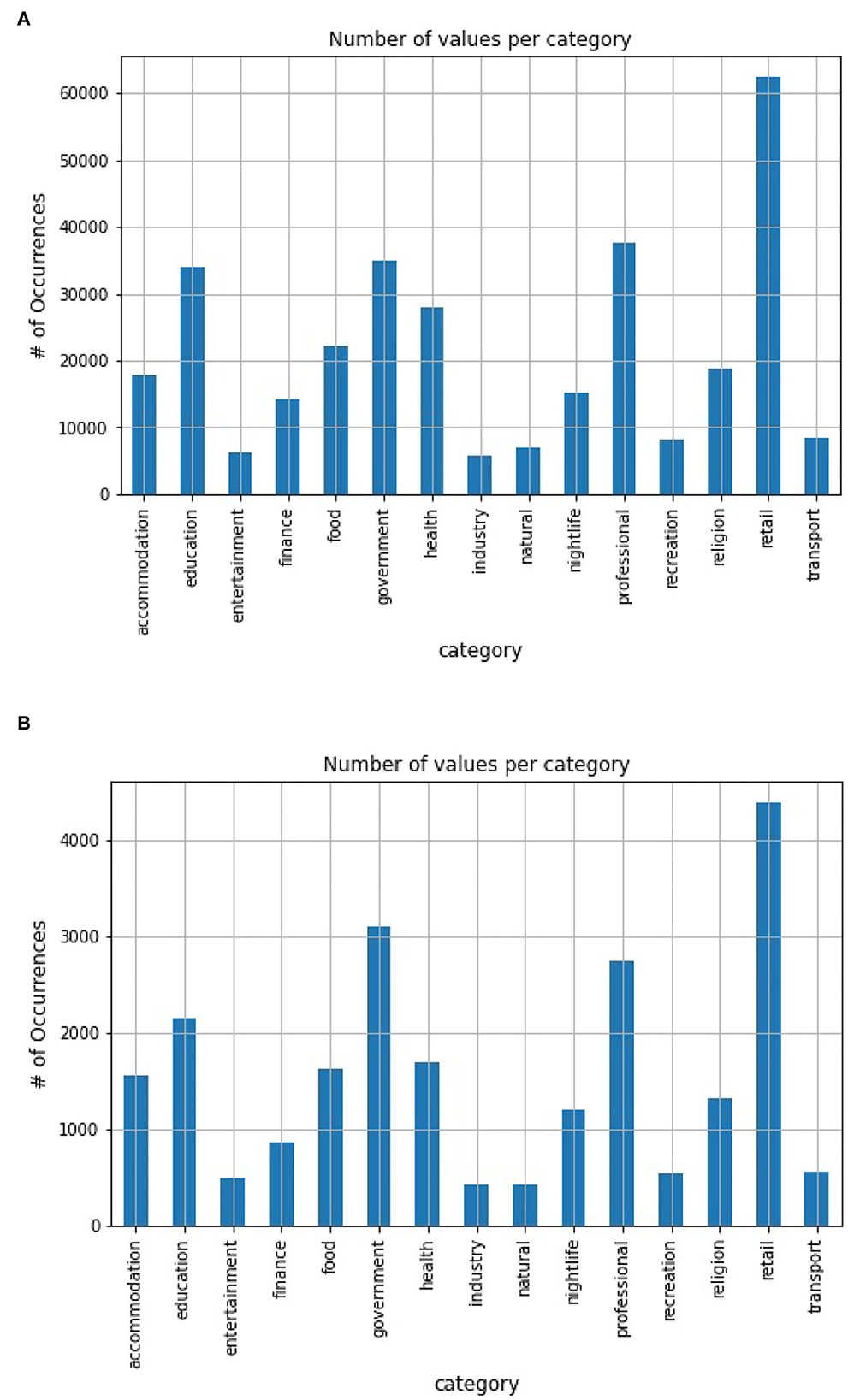
Figure 3. Dataset statistics. (A) Weakly-labeled training set distribution. (B) Gold-standard testing set distribution.
2.3. Baselines training
Our ultimate goal is to train a model that generalizes beyond the information expressed in the above weakly labeling functions. We conduct experiments on our generated probabilistic labels dataset using a strong discriminative model to investigate (i) the performance of large-scale weak-labeled data, and (ii) the effectiveness of large pre-trained language models on the short-text classification task. The baselines include PhoBERT (Nguyen and Tuan Nguyen, 2020) and viBERT (Bui et al., 2020) which are monolingual variants on the Vietnamese datasets of BERT and RoBERTa, respectively. PhoBERT is pre-trained on a 20GB text corpus combining Vietnamese Wikipedia and Vietnamese news, while viBERT is pre-trained on 10GB of news corpus.
Several pre-processing steps are used including character case conversion and word segmentation. Since the name of POI often contains proper names, which does not improve prediction efficiency, we decided to perform a conversion of all POI names to lowercase. RDRSegmenter (Vu et al., 2018) is applied to perform automatic Vietnamese word segmentation.
Both PhoBERT and viBERT are fine-tuned using the transformers library (Wolf et al., 2020). AdamW optimizer with a fixed learning rate of 2e-05 and a batch size of 32 is used. The baselines are fine-tuned for 30 epochs with early stopping if no performance improvement is found after 5 continuous epochs. Micro-average F1 score on the validation set is used to select the best model checkpoint to report the final score. Details of the hyper-parameter that we used for both PhoBERT and viBERT are presented in Table 1.
3. Results
We conducted experiments using baselines on our gold-standard test set of 30,000 POIs. Following Brandsen et al. (2020), a gold-standard test set was created by a two-phase annotation process. First, two guideline annotators randomly annotated 10% of the test set independently. Then, five annotators were employed to annotate the whole test set. Annotations are revised until they achieve an inter-annotator agreement F1 score of at least 0.92 calculated over the POIs that already have gold annotations from the 10% set. Statistics of our test set can be found in Figure 3B.
Table 2 shows the classification results of the baselines on the test set. In addition to the standard micro-average F1 score, we also reported the macro-average F1 score. We found that both PhoBERT and viBERT produced desirable performances thus confirming the effectiveness of large-scale weak-labeled training using pre-trained monolingual language models on the short-text classification task. Overall, PhoBERT outperformed viBERT (Weighted-F1: 0.90 vs. 0.87; Macro-F1: 0.88 vs. 0.86). We performed an error analysis using the best-performing model, PhoBERT, and found the following observations:
• There are some categories with low F1 score (i.e., 63% for recreation). It is largely due to the fact that these categories have a significantly lower number of data points compared to others, thus resulting in unbalance problem.
• The appearance of abbreviation words, specifically uncommon ones, significantly reduces the performance of baselines, e.g., “trung tâm vhtt xã hiẽu liêm” (in English “Hieu Liem commune cultural and sports center,” here “trung tâm vhtt” is an abbreviation for “trung tâm văn hóa thẽ thao,” which means “cultural and sports center”). “trung tâm văn hóa thẽ thao” is the key semantic content for POI type reasoning; however, its abbreviation “trung tâm vhtt” provides no meaning.
• The baselines is struggling to differentiate ambiguous categories such as professional vs. retail and food vs. retail. For example, “quang linh mobile” (Quang Linh mobile store) and “nam long mobile” (Nam Long mobile store) should be of category retail but are predicted as professional.
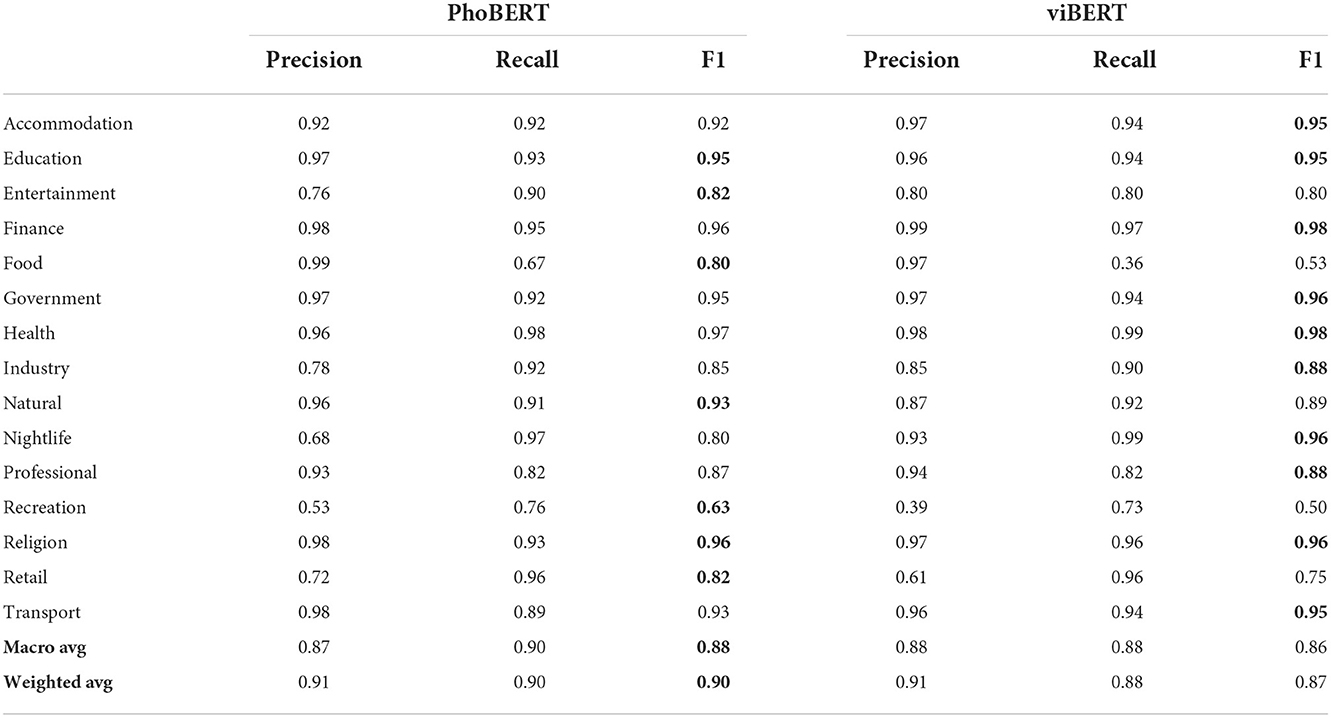
Table 2. Baselines F1 score for each type of Point-of-Interests (POIs), macro-average, and weighted-average F1 scores.
Table 3 evaluates the improvement gained from our generated POI categories using the best performing model PhoBERT compared with the original crowd-sourcing categories. Our proposed approach has significantly improved the accuracy of POI categories from 56 to 93%.
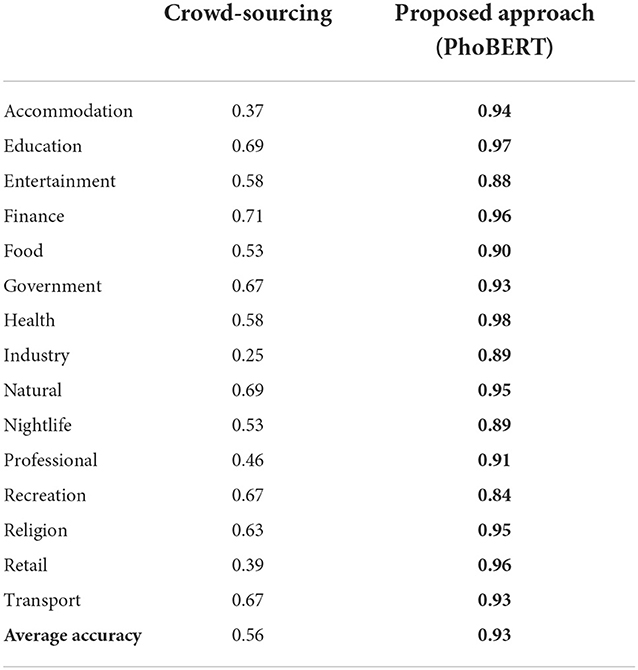
Table 3. Accuracy evaluation of POI based on original WeMap's crowd-sourcing categories compared to automatically generated categories from our proposed approach.
4. Discussion
In this paper, we presented the first results from deploying the weak labeling process in a large-scale, industrial setting for the POI classification problem. We empirically conducted experiments on our dataset and showed that weak labeling significantly increases the efficiency of the pre-trained language models and reduces the time and effort of hand-labeling for a large amount of training data. We hope that our findings can be a starting point for NLP research and applications in the POI domain in the future.
Data availability statement
The datasets presented in this study can be found in online repositories. The names of the repository/repositories and accession number(s) can be found below: https://github.com/PIVASIA/wemap-poi-dataset.
Author contributions
LH, PS, and BH contributed to the conception and design of the study. TT conducted the experiments. LD organized the dataset. LH wrote the first draft of the manuscript. TT, LD, BH, and PS wrote sections of the manuscript. All authors contributed to the manuscript revision, read, and approved the submitted version.
Funding
This study was funded by the Vietnam Ministry of Science & Technology (MOST) under Science & Technology 4.0 Program grant (No. ÐTCT-KC-4.0-03/19-25).
Acknowledgments
The authors would like to thank the WeMap team for providing data.
Conflict of interest
Author LH was employed by FIMO.
The remaining authors declare that the research was conducted in the absence of any commercial or financial relationships that could be construed as a potential conflict of interest.
Publisher's note
All claims expressed in this article are solely those of the authors and do not necessarily represent those of their affiliated organizations, or those of the publisher, the editors and the reviewers. Any product that may be evaluated in this article, or claim that may be made by its manufacturer, is not guaranteed or endorsed by the publisher.
Footnotes
1. ^http://www.poi58.com/search/s/download/beijingpois.html
2. ^https://www.yelp.com/dataset
4. ^https://github.com/pelias/pelias/wiki/Taxonomy-v1#pelias-taxonomy-v1-proposal
References
Bach, S. H., Rodriguez, D., Liu, Y., Luo, C., Shao, H., Xia, C., et al. (2019). “Snorkel drybell: a case study in deploying weak supervision at industrial scale,” in Proceedings of the 2019 International Conference on Management of Data, SIGMOD '19 (New York, NY: Association for Computing Machinery), 362–375.
Basiri, A., Haklay, M., Foody, G., and Mooney, P. (2019). Crowdsourced geospatial data quality: challenges and future directions. Int. J. Geograph. Inf. Sci. 33, 1588–1593. doi: 10.1080/13658816.2019.1593422
Brandsen, A., Verberne, S., Wansleeben, M., and Lambers, K. (2020). “Creating a dataset for named entity recognition in the archaeology domain,” in Proceedings of the 12th Language Resources and Evaluation Conference (Marseille: European Language Resources Association), 4573–4577.
Bui, T. V., Tran, T. O., and Le-Hong, P. (2020). “Improving sequence tagging for Vietnamese text using transformer-based neural models,” in Proceedings of the 34th Pacific Asia Conference on Language, Information and Computation (Hanoi: Association for Computational Linguistics0, 13–20.
Choi, S. J., Song, H. J., Park, S. B., and Lee, S. J. (2014). “A poi categorization by composition of onomastic and contextual information,” in 2014 IEEE/WIC/ACM International Joint Conferences on Web Intelligence (WI) and Intelligent Agent Technologies (IAT), Vol. 2 (Warsaw: IEEE), 38–45.
Crammer, K., and Singer, Y. (2002). On the algorithmic implementation of multiclass kernel-based vector machines. J. Mach. Learn. Res. 2, 265–292. doi: 10.5555/944790.944813
Eftaxias, G., Tsakonas, N., Giannopoulos, G., Kostagiolas, N., Syngros, A., and Skoutas, D. (2019). “LGM-pc: A tool for poi classification on QGIS,” in Proceedings of the 16th International Symposium on Spatial and Temporal Databases, SSTD '19 (New York: Association for Computing Machinery0, 182–185.
Giannopoulos, G., Alexis, K., Kostagiolas, N., and Skoutas, D. (2019). “Classifying points of interest with minimum metadata,” in Proceedings of the 3rd ACM SIGSPATIAL International Workshop on Location-Based Recommendations, Geosocial Networks and Geoadvertising, LocalRec '19 (New York, NY: Association for Computing Machinery), 4.
Giannopoulos, G., Karagiannakis, N., Skoutas, D., and Athanasiou, S. (2016). “Learning to classify spatiotextual entities in maps,” in The Semantic Web. Latest Advances and New Domains, eds H. Sack, E. Blomqvist, M. d'Aquin, C. Ghidini, S. P. Ponzetto, and C. Lange (Cham: Springer International Publishing), 539–555.
Goldberger, J., Hinton, G. E., Roweis, S., and Salakhutdinov, R. R. (2004). “Neighbourhood components analysis,” in Advances in Neural Information Processing Systems, Vol. 17, eds L. Saul, Y. Weiss, and L. Bottou (Cambridge, MA: MIT Press).
Goodchild, M. F. (2007). Citizens as sensors: the world of volunteered geography. GeoJournal 69, 211–221. doi: 10.1007/s10708-007-9111-y
Mikolov, T., Sutskever, I., Chen, K., Corrado, G., and Dean, J. (2013). “Distributed representations of words and phrases and their compositionality,” in Proceedings of the 26th International Conference on Neural Information Processing Systems, Vol. 2, NIPS'13 (Red Hook, NY: Curran Associates Inc.), 3111–3119.
Mülligann, C., Janowicz, K., Ye, M., and Lee, W.-C. (2011). “Analyzing the spatial-semantic interaction of points of interest in volunteered geographic information,” in Spatial Information Theory, eds M. Egenhofer, N. Giudice, R. Moratz, and M. Worboys (Berlin; Heidelberg: Springer Berlin Heidelberg), 350–370.
Nguyen, D. Q., and Tuan Nguyen, A. (2020). “PhoBERT: pre-trained language models for Vietnamese,” in Findings of the Association for Computational Linguistics: EMNLP 2020 (Ha Noi: Association for Computational Linguistics), 1037–1042.
Ratner, A., Bach, S. H., Ehrenberg, H., Fries, J., Wu, S., and Ré, C. (2017). Snorkel: rapid training data creation with weak supervision. Proc. VLDB Endow. 11, 269–282. doi: 10.14778/3157794.3157797
Tobler, W. R. (1970). A computer movie simulating urban growth in the detroit region. Econ. Geography 46(Sup. 1), 234–240. doi: 10.2307/143141
Touya, G., Antoniou, V., Olteanu-Raimond, A.-M., and Van Damme, M.-D. (2017). Assessing crowdsourced poi quality: combining methods based on reference data, history, and spatial relations. ISPRS Int. J. Geoinf. 6, 80. doi: 10.3390/ijgi6030080
Vandecasteele, A., and Devillers, R. (2015). Improving Volunteered Geographic Information Quality Using a Tag Recommender System: The Case of OpenStreetMap, Chapter 3. Cham: Springer International Publishing.
Varma, P., and Ré, C. (2018). Snuba: automating weak supervision to label training data. Proc. VLDB Endow. 12, 223–236. doi: 10.14778/3291264.3291268
Vu, T., Nguyen, D. Q., Nguyen, D. Q., Dras, M., and Johnson, M. (2018). “VnCoreNLP: a Vietnamese natural language processing toolkit,” in Proceedings of the 2018 Conference of the North American Chapter of the Association for Computational Linguistics: Demonstrations (New Orleans, LA: Association for Computational Linguistics), 56–60.
Wolf, T., Debut, L., Sanh, V., Chaumond, J., Delangue, C., Moi, A., et al. (2020). “Transformers: State-of-the-art natural language processing,” in Proceedings of the 2020 Conference on Empirical Methods in Natural Language Processing: System Demonstrations (Brooklyn: Association for Computational Linguistics), 38–45.
Keywords: crowd-sourcing, point-of-interest, weak labeling, snorkel, BERT-based
Citation: Tran VT, Le QD, Pham BS, Luu VH and Bui QH (2022) Large-scale Vietnamese point-of-interest classification using weak labeling. Front. Artif. Intell. 5:1020532. doi: 10.3389/frai.2022.1020532
Received: 16 August 2022; Accepted: 08 November 2022;
Published: 09 December 2022.
Edited by:
Mohammad Akbari, Amirkabir University of Technology, IranReviewed by:
Rini Anggrainingsih, Sebelas Maret University, IndonesiaSuan Lee, Semyung University, South Korea
Copyright © 2022 Tran, Le, Pham, Luu and Bui. This is an open-access article distributed under the terms of the Creative Commons Attribution License (CC BY). The use, distribution or reproduction in other forums is permitted, provided the original author(s) and the copyright owner(s) are credited and that the original publication in this journal is cited, in accordance with accepted academic practice. No use, distribution or reproduction is permitted which does not comply with these terms.
*Correspondence: Viet Hung Luu, aHVuZ2x2QGZpbW8udm4=
 Van Trung Tran
Van Trung Tran Quang Dao Le1,2
Quang Dao Le1,2 Viet Hung Luu
Viet Hung Luu Quang Hung Bui
Quang Hung Bui